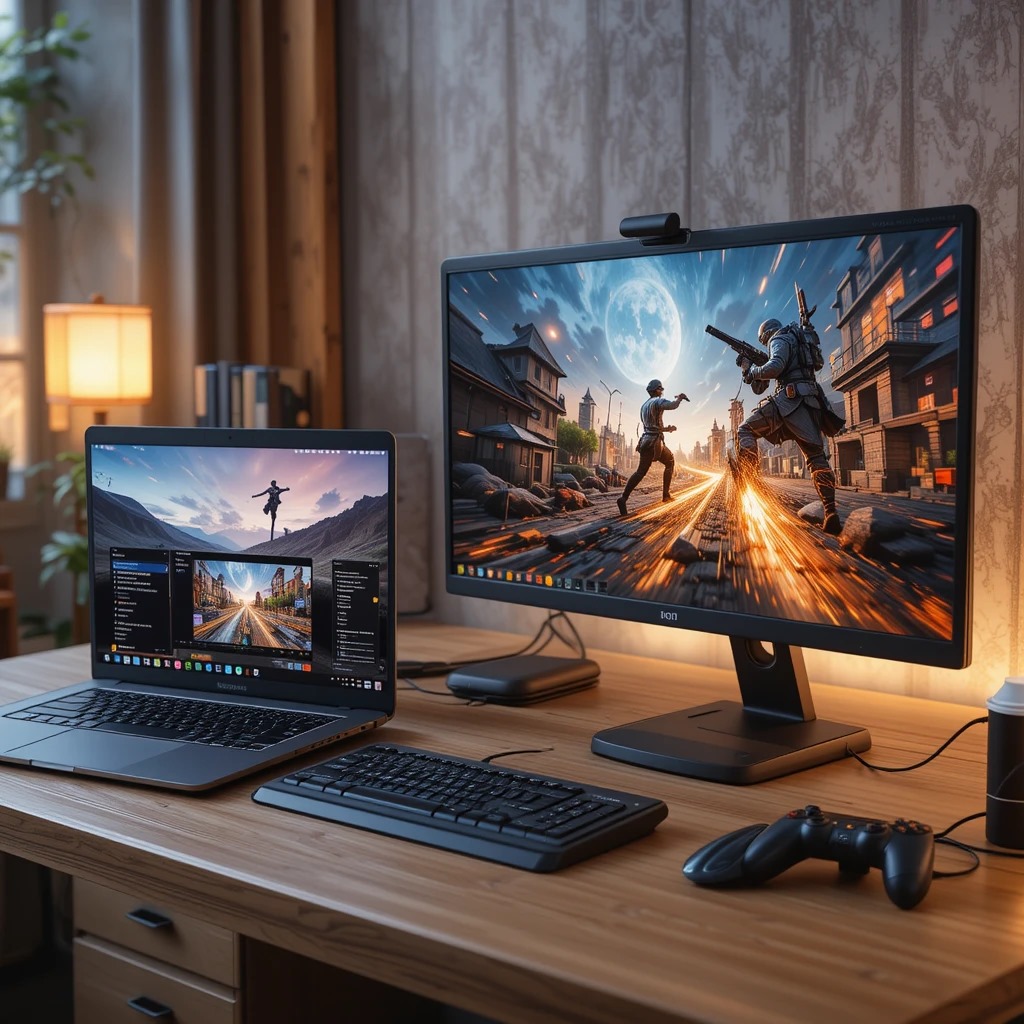So I’ve gone through THREE different portable monitors in the past year. Not because I’m rich (I’m definitely not), but because I kept buying the wrong size and getting frustrated. Learn from my expensive mistakes, people!
When I bought my first portable monitor last year, I thought, “Bigger is obviously better, right?” WRONG. So very wrong. After lugging around a 17-inch behemoth that barely fit in my backpack and gave me shoulder pain, I learned that portable monitor size is actually a pretty personal decision.
The Sizes You’ll Actually Find Out There
Let me break down the common sizes and what I’ve discovered about each one through my wallet-draining journey:
13-14 inch: The Ultra-Portable Options
My THIRD monitor purchase was a 13.5-inch model, and for my particular needs, it was finally the right choice. These smaller screens are super light (mine’s about 1.4 pounds) and slip into my laptop bag without making it bulge like I’m carrying a small TV.
Who these are ACTUALLY good for:
- Frequent travelers (airport warriors, I see you)
- People with tiny desks (my NYC apartment setup feels seen)
- Anyone who values portability over screen real estate
I use mine mainly as a secondary screen for reference materials, Slack, or email while I work on my main laptop screen. Perfect for coffee shop productivity without taking over the entire table like some kind of digital colonizer.
The downside no one talks about:
Text can get pretty small, and you’ll find yourself squinting if your eyesight isn’t perfect. After a full day, my eyes definitely feel the strain. Also, good luck doing detailed creative work on these.
15.6-inch: The “Goldilocks” Size
My SECOND monitor was a 15.6-inch, and honestly, for most people, this is probably the sweet spot. It’s the same size as many laptops, so it feels familiar.
Who these are ACTUALLY good for:
- People who want a good balance of screen space and portability
- WFH folks who occasionally need to move their setup
- Anyone using it for both work AND entertainment
At this size, you can comfortably have two documents side by side, which is super helpful for my copywriting work. Video content also looks decent without feeling like you’re watching on a phone.
The downside no one talks about:
Still heavy enough that you’ll definitely notice it in your bag (mine was about 2.1 pounds). And while it’s more portable than larger options, it’s still a commitment to carry around daily.
17+ inch: The “Technically Portable” Options
My FIRST monitor was a 17.3-inch monster that I bought because I wanted “the full experience.” Big mistake. HUGE.
Who these are ACTUALLY good for:
- People who rarely move their setup
- Gamers who occasionally go to a friend’s house
- Creative professionals who need screen space and only transport occasionally
The screen real estate is admittedly awesome. I could have three applications open and still see everything clearly. For video editing or detailed design work, the extra space is genuinely useful.
The downside no one talks about:
“Portable” is a very generous term here. At nearly 3 pounds plus a bulky protective case (because you WILL need one), it transformed my laptop bag into a medieval torture device for my shoulder. Also, good luck using this on an airplane tray table or in a coffee shop with limited space.
Resolution Matters More Than You Think
Here’s something I learned the hard way: resolution and screen size need to be in balance.
Full HD (1920×1080):
Works great on smaller screens (13-15.6 inches). I tried a 1080p resolution on my 17-inch monitor and could see individual pixels from normal viewing distance. Not ideal.
2K and 4K:
Much better for larger screens (15.6+ inches). I eventually got a 4K 13.5-inch monitor, and while everything looks CRISP, I had to scale everything up to 150% to read anything, which defeats the purpose of higher resolution. Plus, it absolutely MURDERS battery life when powered by my laptop.
Practical Stuff No One Tells You About
The Stand Situation Is Problematic
Most portable monitors come with flimsy kickstand-style covers that work OK on perfectly flat, stable surfaces. Spoiler alert: many surfaces in the real world are neither flat nor stable.
After my cover stand failed during a client presentation (mortifying), I invested in a portable monitor stand. It adds weight to my bag but provides much better stability and adjustable viewing angles. For those looking to expand their workspace, a dual screen monitor can be a great solution for increased productivity.
Connectivity Can Make or Break Your Experience
My first monitor only had HDMI input, which seemed fine until I got a new laptop with only USB-C ports. Suddenly I needed adapters for everything.
My current setup uses USB-C for both power and display signal, which means ONE CABLE for everything. This might sound like a small thing, but when you’re setting up in a coffee shop or coworking space, reducing cable clutter is amazing.
Questions I Get Asked All The Time
What size portable monitor should I choose for gaming?
If portability is your priority, 15.6-inch with at least a 120Hz refresh rate. If performance matters more than portability, 17-inch will give you a better experience, but prepare for the extra weight.
I tried competitive gaming on my 13.5-inch, and it was pretty terrible – everything felt too small and cramped. For casual gaming it’s fine, but anything competitive needs more screen space.
Is a 13-inch portable monitor too small for work?
For a secondary display? Not at all. For your only monitor? Probably.
I use my 13.5-inch as a secondary screen for reference materials, communication apps, or code previews while I work on my main laptop screen. For this purpose, it’s perfect. But on days when I’ve had to use it as my only display, it feels cramped pretty quickly.
Are portable touch screen monitors worth it?
Surprisingly, yes! I was skeptical but now use the touch functionality more than I expected. If you’re interested in exploring options, touch screen monitor can add an extra layer of versatility to your portable display setup.
It’s super convenient for scrolling through documents, zooming in on images, or navigating presentations without needing extra desk space for a mouse. Is it essential? No. Is it nice to have? Definitely.
Final Thoughts: What I Wish I’d Known From the Start
After my expensive journey through three different portable monitors, here’s what I wish someone had told me:
- Be honest about your priority: portability or screen real estate. You can’t maximize both.
- Consider WHERE you’ll use it most often – coffee shops need different solutions than hotel desks.
- Connection types matter more than you think. USB-C is worth paying extra for.
- Weight differences between models might seem small on paper but feel massive when you’re carrying it daily.
For most people, a 15.6-inch monitor hits the sweet spot between usability and portability. But if you’re constantly on the move like me, the 13-14 inch category might actually be better despite the smaller screen.
And remember – the “best” size is ultimately the one that fits YOUR specific use case. Don’t let some random internet person (yes, even me) convince you that you need something that doesn’t actually match how you’ll use it.







